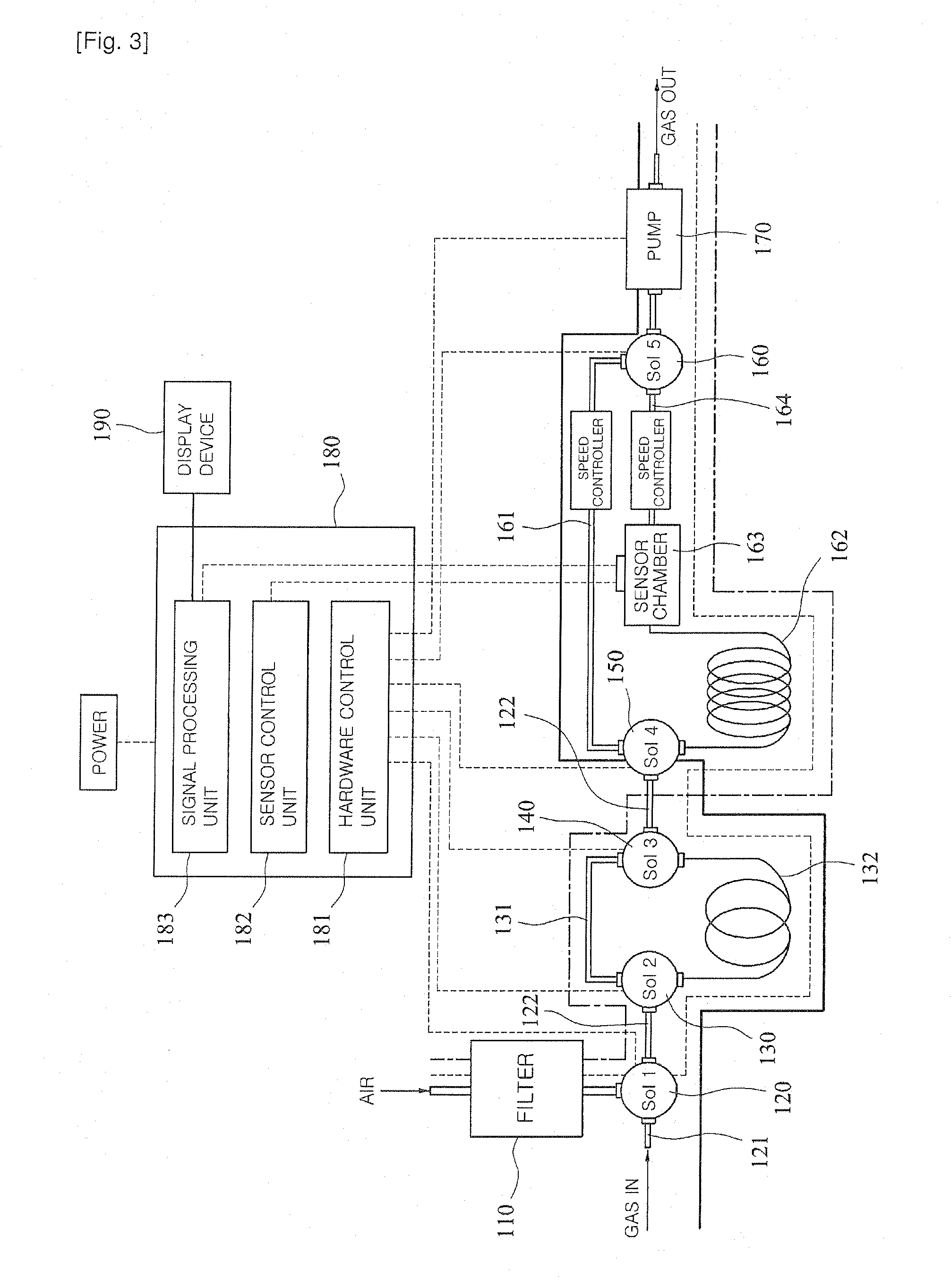Apparatus and method of analyzing constituents of gas in oral cavity and alveolar gas
a technology of alveolar gas and gas constituents, which is applied in the field of apparatus and a method of analyzing constituents of gas in an oral cavity and exhaled breath, can solve the problems of inability to precisely diagnose patients, increase the cost of operation, and the inability to distinguish hydrogen sulfide (hsub>2/sub>s) and methyl mercaptan (chsub>3/sub>sh)
- Summary
- Abstract
- Description
- Claims
- Application Information
AI Technical Summary
Benefits of technology
Problems solved by technology
Method used
Image
Examples
first embodiment
[0044]The apparatus for analyzing the constituents of the gas in the oral cavity and the exhaled breath according to a modified embodiment of the first embodiment, as shown in FIG. 6, further includes a heater 162a to maintain the temperature of the column 162, and a heater control unit 184 that is connected to the heater 162a to control the heater 162a and provided in the control unit 180. The heater control unit maintains the temperature of the heater constantly and adjusts a heating speed of the column at a predetermined rate, thus reducing the retention time of the constituent having the relatively long retention time.
[0045]The filter 110 is filled with an adsorption and dehumidifying substance such as silica gel, calcium chloride, and activated carbon in order to filter the air from the outside of the apparatus so that polar and non-polar molecules can be adsorbed and water can be removed from the air.
[0046]The carrier gas is fresh dry air which passes through the filter 110, c...
second embodiment
[0071]However, if the collected gas contains much water or the gas constituents mostly have low volatility, a fresh carrier gas having lower humidity is required in order to volatilize the all residues and remove the water. Furthermore, the sampling loop needs to be exposed to the fresh carrier gas for a longer time. Accordingly, the second embodiment is preferred in this case.
[0072]FIG. 13 comparatively shows the cases where the two embodiments are respectively applied, in measuring the oral malodor. According to the graph of FIG. 13, signals of hydrogen sulfide (H2S) and methyl mercaptan (CH3SH) are sequentially output. According to the signal outputs, the second embodiment is superior to the first embodiment since two peaks of the graph are more clearly separated and the state of the peaks are more excellent.
PUM
| Property | Measurement | Unit |
|---|---|---|
| temperature | aaaaa | aaaaa |
| temperature | aaaaa | aaaaa |
| volume | aaaaa | aaaaa |
Abstract
Description
Claims
Application Information
 Login to View More
Login to View More - R&D
- Intellectual Property
- Life Sciences
- Materials
- Tech Scout
- Unparalleled Data Quality
- Higher Quality Content
- 60% Fewer Hallucinations
Browse by: Latest US Patents, China's latest patents, Technical Efficacy Thesaurus, Application Domain, Technology Topic, Popular Technical Reports.
© 2025 PatSnap. All rights reserved.Legal|Privacy policy|Modern Slavery Act Transparency Statement|Sitemap|About US| Contact US: help@patsnap.com



